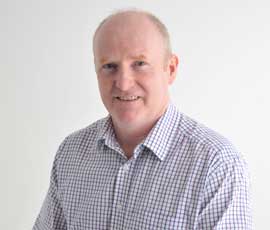OPINION: Scottish Beef Scheme is best left to beef

It’s no secret that I’m not a big fan of coupled support, but the idea that beef-bred calves from the dairy herd could become eligible to attract support in a future Scottish Beef Scheme (SBS) does nothing to change my opinion.
The persistence of NFUS to lobby hard to bring this new stream of support to the dairy sector is regrettable indeed; especially when far more fragile sectors of Scottish farming are certain to suffer huge cuts in future support. Taking advantage of this period of great uncertainty to drive through their long stated objective is seen by many as being opportunistic and divisive.
The fact the union is having a hard time trying to sell the idea to the other livestock sectors in Scotland is hardly surprising. The Scottish Beef Association has certainly become entrenched against the idea. They can see the inclusion of dairy-bred calves in the scheme will destroy the excellent image Scotch beef has built up over the years. At the same time, the increased supply of dairy-type beef cattle that will be coming onto the market can only serve to suppress the prices for their beef cattle.
There is plenty of resentment in the sheep farming sector as well. If dairy farmers are to get a new subsidy and there is no new money in the pot, it has to come from somewhere. Skimming support off the hills to fund a windfall for the dairy sector will not sit well with Scotland’s sheep men. Especially when sheep farmers have had to accept that coupled payments are not a good option for them in today’s fear-saturated atmosphere of compliance checks and penalties.
Another downside to the whole idea is that it will inevitably lead to a reduction in the numbers of dairy heifer calves being born as dairy farmers chase SBS payments. It’s more than obvious at the moment, even without the distorting effect of SBS payments in the dairy herd, that the number of dairy replacements coming forward isn’t able to keep up with demand. The high price of dairy replacements and the lorry loads of dairy heifers being sucked in from Europe is testament to that. So, with the likelihood of fewer home-bred dairy heifers being produced in the future, our friends in Europe can look forward to an increase in demand and higher prices for their cattle. Gathering SBS payments in Scotland and using it to import dairy replacements from countries such as Denmark won’t do much to improve our balance of payments.
In simple terms, the equation will look like this: For every two dairy cows that are mated with a dairy bull, in all probability you will get one heifer calf and one bull calf. The bull calf will be done away with at birth as it will have no value and it will not attract SBS payments. The net result for the dairy farmer will be one calf and no SBS payments.
Serve the same two dairy cows with a beef bull and the dairy farmer will be laughing all the way to the bank to buy his new dairy heifers from Europe. He will receive two lots of SBS payments and he will sell two beef calves onto the home market with the added bonus that he has doubled the demand for powdered calf milk; Holstein bull calves that are killed at birth don’t drink much milk!
Tell me again how this will be good for the Scottish beef industry?
Neale McQuistin is an upland beef and sheep farmer in south-west Scotland. He farms 365ha, much of which is under stewardship for wildlife, in partnership with his wife Janet.
More online
What do you think about this topic? Have your say on our website forums .
